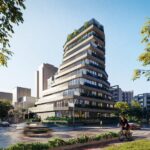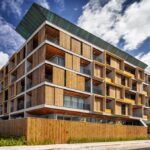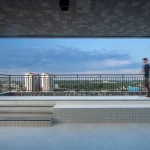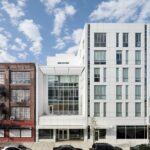Favelas Building, Brazil Building, Horizontes Arquitetura, Fernando Luiz Lara, Architect, Project News, Design Images
Campo do Cascalho Belo Horizonte Favelas Urban Development
Campo do Cascalho, Brazilian Favelas Building – Belo Horizonte Architecture Information, Brazil
Current work by Horizontes Arquitetura with Fernando Luiz Lara in the favelas of Brazil.
Building for the Favelas : news from Brazil
11 Mar 2010
Favelas Belo Horizonte
The first decade of the 21st century in Brazil has been marked by continuous economic growth and increased social expenditure that has slowly but steadily diminished the inequality, especially during President Lula’s second term in office (2007-2010). The PAC (Programa de Aceleração do Crescimento or accelerated growth program) has made more than U$ 200 billion available for infra-structure projects since 2006.
The city of Belo Horizonte (third largest in the country) has been able to bring U$ 340 millions to a favela infrastructure project labeled Vila Viva. Those large scale projects give young architects the opportunity to design public spaces that are much needed in the community.
Campo do Cascalho – proposed views:
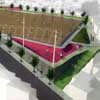
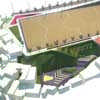
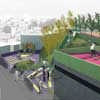
Why the favelas seem so scary?
In his apocalyptical Planet of Slums Mike Davis starts in the very first page with the assertion that the “earth has urbanized even faster than originally predicted by the Club of Rome in its notoriously Malthusian 1972 report”. He goes on to suggest that “since 1970, slum growth everywhere in the south has outpaced urbanization per se”. His main point is that “the cities of the future, rather than being made out of glass and steel as envisioned by earlier generations of urbanists, are instead largely constructed out of crude brick, straw, recycled plastic, cement blocks and scrap wood”. (Davis, 2006: 1,17,19).
While the favelas house about 20% of the population in the Brazilian cities, they have very different levels of infra-structure and therefore display high variations of vulnerability.
Common to all favelas is the lack of land tenure and the social stigma that associates favelados with marginality, although the large majority of its inhabitants are low-paid unskilled workers who are victims, not perpetrators of urban violence.
But the biggest challenge for architects working in the favelas is not violence nor lack of infra structure. It is our inability to engage with a process that is very much the reverse of the traditional design development. Instead of the expected ‘tenure security – infrastructure and building – occupation’ model, the favelas follows the informal: ‘occupation – building and infrastructure – tenure security’. Such inversion makes it difficult for traditionally trained architects to understand such building culture.
Pedreira Prado Lopes – proposed views:
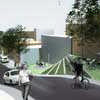
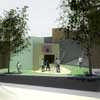
However, a new generation of Brazilian architects is challenging those boundaries. Horizontes, a young trio in Belo Horizonte, have already accumulated significant experience with participatory processes in their first decade in practice. Now working in partnership with Fernando Lara (a professor with large international experience) they have been able to articulate a new approach to public spaces in the reminiscent areas between the new roads and the favela remaining buildings.
In Campo do Cascalho, and Pedreira Prado Lopes the design strategy has been to locate active programs (around sports) that foster collective appropriation and discourage “privatization” by any group or individual. At the same time the spaces have to be “defensible” with as much visibility as possible to contribute to the sense of security. Another preoccupation regards soil permeability. Being extremely dense (up to 300 people/ha) the favelas are also very much impermeable and that creates enormous problems during the rainy season when 100mm of rainfall per day is a weekly occurrence.
The design solution specifies traditional materials used in new ways to increase permeability in inclined platforms that foster active uses and discourage further illegal construction (flat surfaces are much easier to be quickly taken and incorporated to existing buildings).
Working with very tight budgets in an extremely vulnerable and complex context we have tried to use design creativity to make the best public space possible out of such unique opportunities.
Pedreira Prado Lopes – proposed plans:
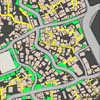
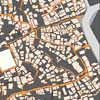

Horizontes Arquitetura: Gabriel Velloso, Luiz Felipe de Farias e Marcelo Palhares
Fernando Luiz Lara, PhD, University of Texas at Austin
Brazilian Favelas Architecture images / information from Fernando Lara
Location: Belo Horizonte, Brazil
Belo Horizonte Buildings
Lagoa Seca Mining
Design: Vazio S/A Arquitetura e Urbanismo
Lagoa Seca Mining
Brazilian Architecture – Selection
Topographical Amnesias
Vazio S/A Arquitetura e Urbanismo
Topographical Amnesias
Top Towers – Housing
Königsberger Vannucchi Arquitetos Assoc.
Top Towers São Paulo
Image and Audio Museum, Rio de Janeiro
Diller Scofidio + Renfro
Museu da Imagen e de Som
Comments / photos for the Favelas Building Brazilian Architecture page welcome

